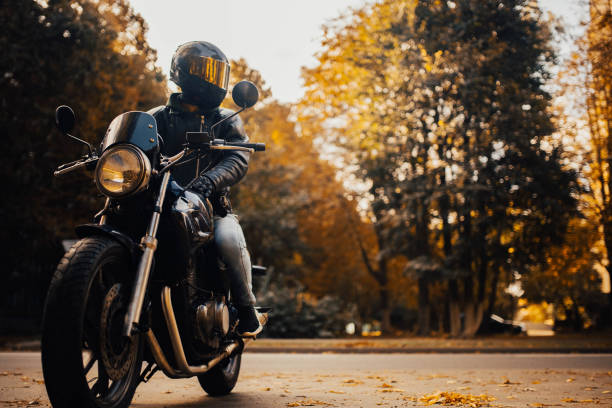A Practical Guide to Choosing and Enjoying a Motorcycle
Learn how to choose and enjoy a motorcycle with this easy, U.S.-focused guide. Explore popular types, key benefits, beginner tips, and practical advice for finding local services such as training centers and repair shops. This concise article helps riders understand their options, stay safe on the road, and connect with nearby resources. A great starting point for anyone considering a motorcycle for commuting, travel, or recreation.
A motorcycle offers far more than a way to get from point A to point B. For many riders in the USA, it represents freedom, convenience, and a more engaging way to travel. Whether you're exploring city streets, commuting, or planning long weekend rides, understanding your options can help you make confident decisions. This guide summarizes the main types, benefits, beginner tips, and how to find local motorcycle-related services in your area.
Types / Options Available
Motorcycles come in many forms, each suited for different riding styles and comfort levels. Here are the most common options riders in the U.S. consider:
1. Standard / Naked Bikes
These motorcycles have an upright seating position and minimal bodywork. They are popular with beginners because they are versatile, manageable, and comfortable for both short and long rides.
2. Cruisers
Known for their low seats and relaxed ergonomics, cruisers are ideal for slow, steady rides. Many riders choose cruisers for comfort and a classic American look. They work well for daily commuting and scenic touring.
3. Sport Bikes
Sport bikes focus on performance, quick handling, and aerodynamic design. Their forward-leaning position makes them preferred by riders who enjoy spirited riding. They are best for experienced riders who want precision and speed.
4. Touring Motorcycles
Designed for long-distance travel, touring models come with large storage compartments, wind protection, and comfortable seating. They are great for cross-country trips and multi-hour rides.
5. Dual-Sport and Adventure Bikes
These motorcycles handle both pavement and mild off-road terrain. They are perfect for riders who want flexibility and the ability to explore beyond the main roads.
6. Scooters and Small-Displacement Options
Lightweight scooters and small motorcycles offer excellent fuel economy and easy maneuverability. They are ideal for dense urban areas and new riders who want a simple, practical option.
Benefits / Advantages
Riding a motorcycle offers a wide range of advantages that appeal to different lifestyles:
Affordability and Efficiency
Motorcycles often cost less to operate than cars. They typically use less fuel and require fewer resources to maintain, making them appealing for daily commuting.
Easy Parking and Traffic Flexibility
Finding parking spots is easier, especially in busy cities. Motorcycles can fit into smaller spaces, and their compact size helps riders navigate through congested roads more smoothly.
A More Engaging Travel Experience
Motorcycle riding provides greater connection to the environment. Many riders enjoy the sense of freedom and the immersive experience of being outdoors while traveling.
Skill Development and Focus
Riding requires balance, awareness, and controlled movement. Over time, many find that riding improves focus, reflexes, and situational awareness.
Community and Lifestyle
In the USA, motorcycle culture is vibrant and welcoming. Riders often join local groups, events, and rides, creating opportunities for friendships and shared experiences.
Tips or How-To Guidance
If you're considering a motorcycle or beginning your riding journey, these simple tips can help you stay safe and confident:
1. Choose the Right Fit
Select a motorcycle that matches your size, comfort level, and riding goals. Make sure you can place both feet on the ground comfortably and operate all controls with ease.
2. Start With Training
A certified safety course can help new riders build skills quickly. Training also teaches essential habits for safe riding, especially in busy or unfamiliar environments.
3. Wear Proper Gear
A DOT-approved helmet, gloves, jacket, boots, and durable clothing offer protection. Even short trips deserve full gear because road conditions can change unexpectedly.
4. Ride Defensively
Expect other drivers to overlook motorcycles. Maintain visible positioning, keep a safe following distance, and use signals early.
5. Perform Regular Maintenance
Check tire pressure, brakes, lights, and oil frequently. Consistent maintenance helps your motorcycle perform better and reduces the chance of roadside issues.
6. Practice in Low-Traffic Areas
Before taking longer rides, practice low-speed turns, braking, and starting on inclines. This builds confidence and better control.
How to Find or Access Local Services
Whether you need training, maintenance, or community support, there are several ways to locate motorcycle-related services near you:
Local Motorcycle Shops
Most cities have independent shops or service centers that offer repairs, parts, and advice. Search for “motorcycle repair near me” or “local motorcycle service” to find nearby options.
Training Centers
Many states offer motorcycle safety courses through public programs or certified private instructors. These courses often provide licensing assistance and structured learning.
Riding Groups and Community Events
Local riding clubs, online forums, and community centers often organize meetups, training sessions, or rides. Joining a group helps you learn from experienced riders and discover new routes.
Online Directories and Maps
Mapping apps and business directories make it easy to compare shop hours, reviews, and locations. Look for nearby options before planning long trips or maintenance appointments.
Dealerships and Accessory Stores
Dealerships frequently provide test rides, gear selections, and service departments. Even if you aren’t purchasing a new motorcycle, their staff can be a helpful resource for questions and guidance.
